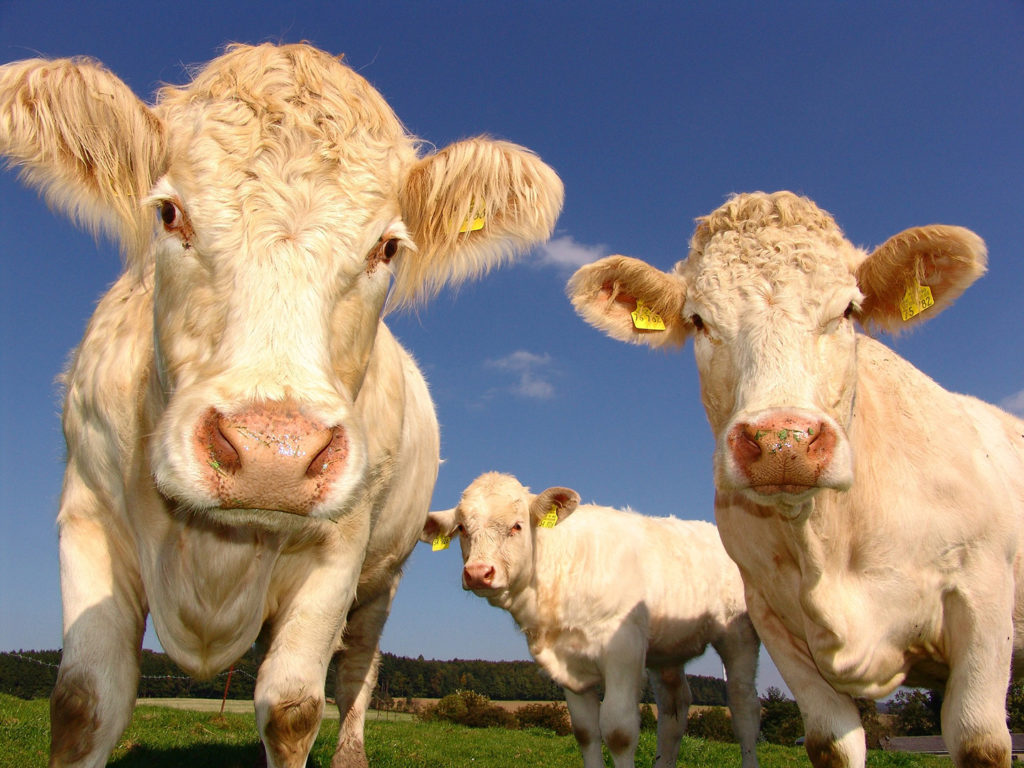Cattle’s Summer Needs

This year, many southern states in the nation, especially Texas, are experiencing the worst drought on record. Several farmers may resort to sell their cattle to keep their farms afloat during these hard economic and dry times. According to Dr. Kevin Washburn, associate professor at the Texas A&M College of Veterinary Medicine & Biomedical Sciences (CVM), there are steps that owners can take to save money and ensure their cattle are staying healthy living off the weathered land.
The first thing to remember during the summer months is to provide adequate shade and clean water for cattle. While this seems obvious, trees are not as plentiful in some pastures and water sources are compromised because of the heat. If trees are sparse on your land, you can build loafing sheds for your cattle, or there are commercially available free standing shades to provide escape from direct sunlight.
“Sheds or free standing shades are better than barns to protect cattle in the hot months,” explained Washburn. “The higher the roof, the better, because it allows for wind to flow under for better cooling. Barns tend to be enclosed and don’t allow for very much air flow.”
Standing water in a lake or tank may not be an adequate drinking source for your cattle. Especially in drought areas, when the water levels fall and mud is present, the water may become stagnant and unpalatable. It is best to provide a water source that can be cleaned and refilled on a regular basis.
The best type of food for your cattle in the late and dry summer months is good quality grass hay. If there is limited hay available, owners can also feed cattle cubes as a supplement. It is necessary to offer a food source like grass, hay, or cubes not only to meet nutritional needs, but also because cattle may resort to eat the only green plants available, which often are weeds. Many of these weeds, unfortunately, are toxic to livestock. The most common poisonous pasture plants in the southern region of the United States are: coffee senna, twin leaf senna, pigweed, curly dock, oak leaves, old acorns, sneezeweed, broomweed, lobelia, and silver leaf nightshade.
“These toxic plants can be monitored and sprayed,” said Washburn. “However, be careful when spraying for weeds, because the chemicals may make the toxic plants even more palatable actually increasing consumption.”
If hay is not available, Washburn recommends contacting a producer co-operative as they have a network of sources where producers can purchase hay. The downside to this method is the cost. The hay sources are often far away requiring shipping at a premium price.
Washburn suggests supplying balanced mineral mixes free choice and cattle cubes that are 20 to 40 percent protein. This can help reduce the amount of hay required when supplies are limited.
In order to stave off starvation for your cattle and prepare for the dry months, it is best to not overgraze when the pasture is producing and rains are heavy. Managing and storing hay when conditions are good allows for a plentiful supply. However, sometimes in extreme condition even the best planning may not be enough.
To survive during this long, hot summer, pastured cattle need adequate fresh water, food sources, and properly ventilated shade. If there are any questions about dehydration or malnourishment, consult your veterinarian or contact Large Animal Clinical Sciences at the CVM at 979-845-3541.
Pet Talk is a service of the College of Veterinary Medicine & Biomedical Sciences, Texas A&M University. Stories can be viewed on the Web at vetmed.tamu.edu/news/pet-talk. Suggestions for future topics may be directed to editor@cvm.tamu.edu.


